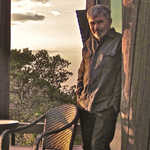Geologically, a fjord (/ˈfjɔərd/ or i/ˈfiːɔərd/; also spelled fiord) is a long, narrow inlet with steep sides or cliffs, created by glacial erosion… A fjord is formed when a glacier cuts a U-shaped valley by ice segregation and abrasion of the surrounding bedrock. Glacial melting is accompanied by the rebounding of the Earth’s crust as the ice load and eroded sediment is removed (also called isostasy or glacial rebound). - Wikipedia, Fjords
Fjords possess an emptiness that speak of both violation and of serenity. The waters flow, azure and calm, defiantly peaceful between the towering cliffs. And yet such stillness only emerged through years of inexorable glacial violence.
I previously argued that being less present to a locale is justifiable in limited contexts. But exceptions aside, there is no substitute for physical presence in being a true witness. Because witnessing is different from seeing. You can see a fjord’s vast expanse of water in photos. You can observe closeups of rock formations in National Geographic. You can analyse the violet and orange hues of sunsets in paintings.
But you can never witness the fjord’s gaping majesty. You cannot yearn for the seagull’s lonely freedom as it soars through the fjord. You cannot feel the little shudders coursing through your body that is attributable less to the cold and more to the fjord’s pristine sublimity.
You cannot hear the fjord’s roaring silence.







